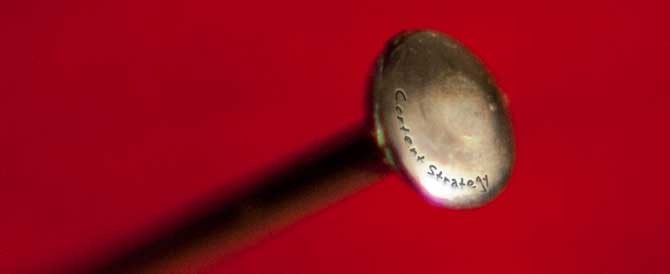Content Strategy, writ small
I had an interesting experience in rebuilding my personal site, from which I thought owners of small sites might be able to learn.
My old site – a miserable 1995-looking hand-coded mess – was full of miscellaneous content, junk, test pages, things I used to think were kind of funny, and a bunch of photos documenting kayaking and backpacking trips, family outings, my wedding, etc.
A year or so prior to rebuilding the site, I’d dropped Google Analytics into the pages, just to get a little experience with it. Site traffic was pretty low, so I didn’t get a lot out of the experience. Until, that is, I began my rebuild.
I started to migrate every awful piece of content, then figured “this is nuts. I wonder who’s looking at any of this?”. I dove into Analytics, and to my surprise, found that people were finding the same few pieces of content again and again. And almost never looking at anything else.
What set the “popular” content apart from the dusty stuff? Words. Words on the page, meaningful names for images, titles that reveal the “about-ness” of content on the page, stories about trips, instead of just the name of the destination, all wrapped in decently semantic HTML that the search engines can properly interpret.
All in all, meaningful content, well-written in depth on clear topics of popular interest, well-labeled, loaded with natural keywords that support the meaning of the page. (At bedtime, my young son calls this loading of natural keywords “a story”).
Of course, that’s what I SAY to people about what works!
And it DOES work to generate organic search traffic, but when I give this advice, I’m usually thinking of sites running on a million dollars of infrastructure, with editorial calendars, writers, IT staff, corporate politics…the lot.
I had no idea that Google would regularly reach into my poorly-conceived tiny trainwreck of a site and deliver people who were interested in what they’d find (vs. trying to find my site in particular).
Of course, this isn’t Content Strategy – it’s a Content Accident. But what it says to me is that even if your site is very small, you can benefit from careful planning for and attention to the way you’re putting content on your site, what audience you intend to attract, and how the content is conceived, written and labeled so that visitors AND search engines will be able to make sense of it.
For my new site, the experience has driven some basic content principles:
- No more images named “DSC_4237”. What is that a picture of? Google doesn’t know either.
- No more bare dumps of the aforementioned poorly-named images. Write a STORY about them.
- Measure and improve upon what people come looking for. Take what I do naturally and sharpen it to a point.
- Think about what you think people would LIKE to see, and write, shoot, post about THAT.
The last one should be a “no-duh”, but how many of us decided to build our first web site long before we thought about what it was for? How many businesses STILL do things that way? How many times does a business person come to you and say “I need a web site” vs. “I need customers to sign up for this service”?
If this has made you think about Content Strategy and your own small site, you might start by reading a couple of the signal texts on Content Strategy:
Content Strategy for the Web, Kristina Halvorson, ISBN 978-0321620064
Clout, Colleen Jones, ISBN 978-0321733016
I’m not a Content Strategist by trade, but style myself an Information Architect. Part of the job is making sure our beautiful content is placed in the page in a way that Google and our visitors can find it. To that end, I work closely with our content strategists so they understand the technical requirements their content will have to meet to serve those goals well. I’ve done a good day’s work when I’ve bridged the business and the geeks.
This is what I do.

January 18, 2012 @ 8:17 am
“even if your site is very small, you can benefit from careful planning for and attention to the way you’re putting content on your site…”
Very true! You need content strategy and planning, no matter the size of your website. Congrats on turning your “Content Accident” into a handy content insight.